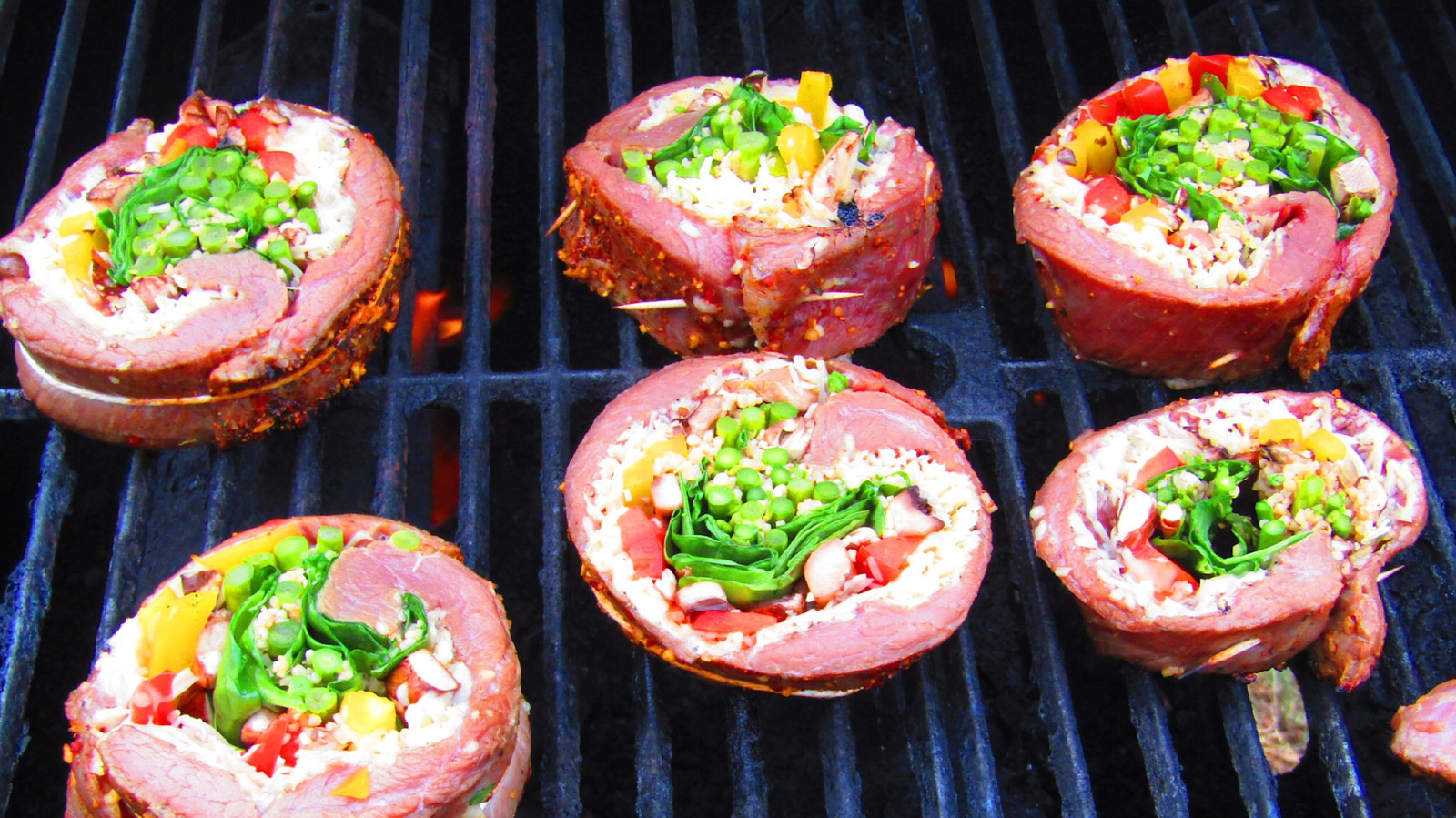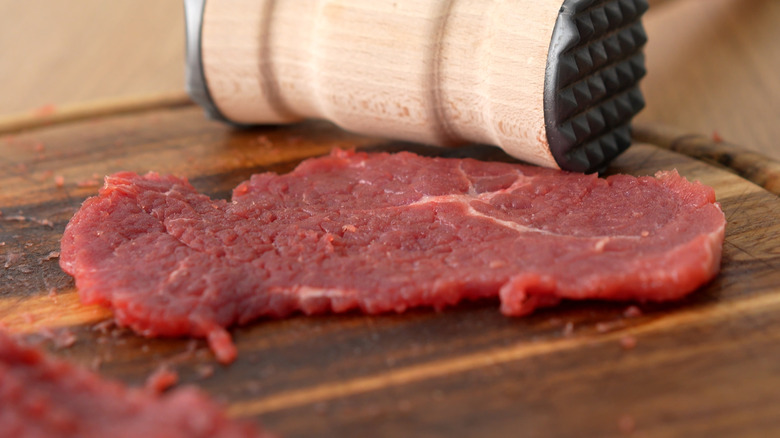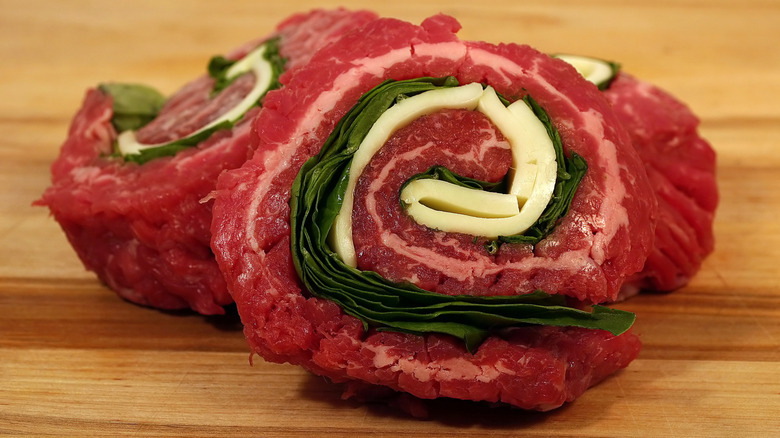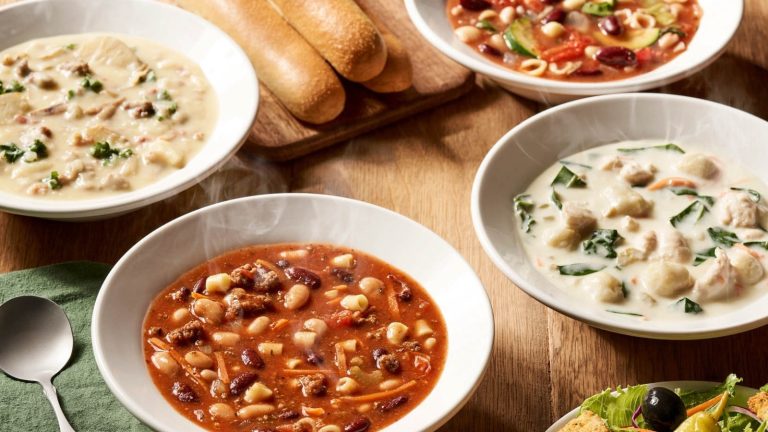The steak pinwheel is an underrated — but undoubtedly impressive — dish to pull out at a cookout or barbecue. Delicious and visually stunning, yet deceptively simple to make, they’re a great option to have in your back pocket when you feel like giving a fresh twist on a steak dinner, or want a simple and quick barbecue dish that’s a surefire winner. They can be intimidating, though — and that often puts people off making them. But they really don’t have to be! To find out more about the best way to prep them, we spoke to chef Christina Miros from Gordon Ramsay’s “Next Level Chef” — she’s just partnered with Pepsi as part of its Grilling Deserves Pepsi: BBQ Crashers summer campaign, so she knows a thing or two about grilling like a master.
“Steak pinwheels can seem more intimidating than they actually are,” she told us. Choosing and prepping your meat correctly for this delicacy is key. She explained, “Flank steak or skirt steak are ideal cuts for pinwheels. Make sure it is about ½ inch thin; if your cut is thicker you can gently pound it out to even thickness.” This step facilitates filling the pinwheel and rolling it up. “After filling, roll the steak tightly so everything is neatly tucked in,” Miros said.
There are good reasons Miros prefers skirt or flank cuts for this feast. “Flank steak has a better shape for easy assembly,” she said, “while skirt steak has more flavor and richness.” When it comes to the choice between form and flavor, for Miros, it’s an easy question: “I’m a flavor girl 100%, so for me, skirt steak is the ideal choice.”
How to ensure pinwheels cook evenly and stay together
When stuffing any piece of meat, one of the most important considerations to make is how you ensure that it cooks evenly. Cooking a piece of meat over charcoal (or any kind of open fire, really) is difficult at the best of times — but it’s especially important to treat any stuffed joint with care. That said, there are ways to make your life significantly easier when it comes to cooking your pinwheels.
“Make sure the steak is an even thickness throughout,” chef Christina Miros told us, adding, “This is why pounding it out to the same thickness is a crucial step in preparation.” To keep things consistent, Miros also emphasized the importance of ensuring each pinwheel is the same size. This way, you don’t get a patchy steak, with certain areas overcooked, while others remain underdone.
When it comes to holding your creation together, you’ve got two main options. Miros explained, “You can either use butcher’s twine or small skewers to secure each individual pinwheel. Tie butcher’s twine or pierce with a skewer every 1.5-2 inches, then slice on either side to get your portions.”
What are the best fillings for steak pinwheels?
The fun of a pinwheel is in its filling, and while you can always go with the classic options, there’s plenty of room to get creative with some more out-of-the-box flavor combinations. For a tried and tested choice, go for big Mediterranean-inspired flavors. Christina Miros enjoys the standard pinwheel fillings of spinach, garlic, and provolone cheese, but she also likes experimenting. Give your pinwheels a French twist, for example. “You can pair caramelized onions with blue cheese, herb mushrooms with goat cheese,” Miros suggested — or give the classic Italian flavor combo a bright, slightly peppery twist by combining arugula with prosciutto and Parmesan.
Miros also has ideas for a Spanish-Argentinian fusion twist on your pinwheels. “You can fill it with Manchego cheese and finish it with a bright chimichurri,” she suggested. (Chimichurri is a boldly-flavored South American steak sauce that works with a variety of applications.) Finally, have some fun adapting standard dips for your pinwheel fillings. As Miros said, “A play on spinach and artichoke dip as the filling would also be glorious.”







